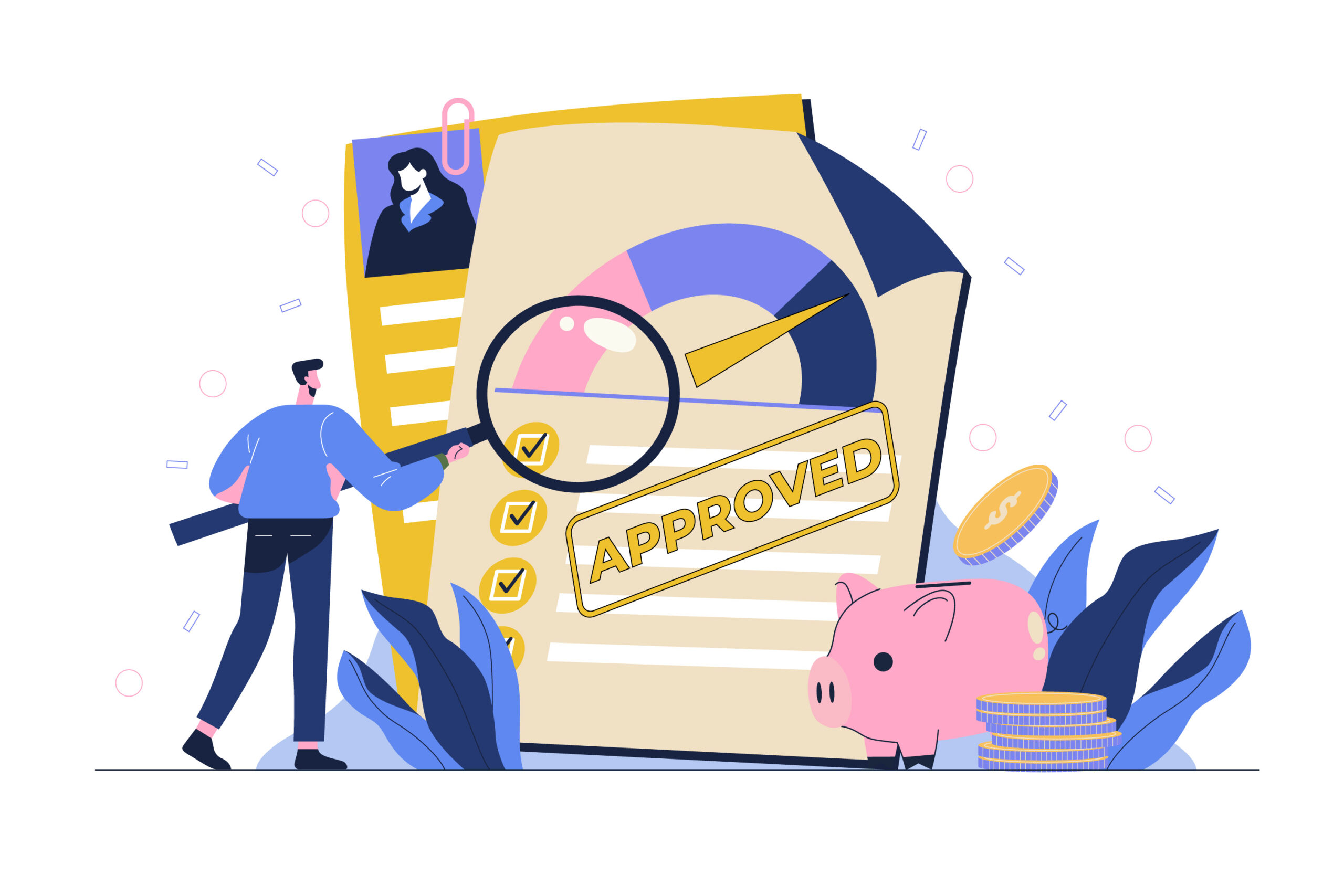Are you in need of a home, business, or personal loan? Browse our in-depth reviews and compare the top loan companies offering competitive rates and fast approval.
Best Loan Options 2023.
Home Loans: How it works

Step 1: Compare Top Rates
Get your best rate comparing at least 3 vendors that can help your save thousands of dollars.

Step 2: Select a Lender
You will get your custom quote in under 2 minutes

Step 3: See Your Savings
See how you could take hundreds off your mortgage
How to get the Best Mortgage for Your Needs
Finding the most favorable mortgage rate can have a significant impact on your monthly budget, potentially saving you hundreds of dollars or more each month and thousands in interest over the loan’s duration. To determine the rates you are eligible for, it is essential to compare different options. Here’s a step-by-step guide:
- Assess the Right Mortgage Type: Begin by considering various factors such as your credit score, down payment capability, projected duration of homeownership, monthly affordability, and your preference for a fixed-rate or variable-rate loan.
- Compare Mortgage Rates: To ensure you get the best available rate, it is recommended to shop around with at least three different lenders, which can include large banks, credit unions, online lenders, or utilizing a mortgage broker. Utilize helpful tools like Financial Pocket’s mortgage rate comparison tool, allowing you to explore rates from multiple lenders. Remember that mortgage rates fluctuate frequently based on market conditions, and they may vary depending on the type and term of the loan.
- Select the Ideal Mortgage Offer: Estimate your monthly mortgage payments, which will prove valuable in evaluating your budget. Pay attention not only to the interest rate but also to the Annual Percentage Rate (APR), as it represents the overall cost of the loan, encompassing interest and additional fees associated with closing costs.
Factors that determine your mortgage rate
- Your credit and finances: The better your credit score, the better interest rate you’ll get. The same goes for the size of your down payment and the amount of debt you carry: Generally, if you have more money to put down, you’ll get a lower rate. If you have additional debt, your rate might be higher.
- Loan amount: The size of your loan can impact your rate.
- Loan structure: Your rate varies whether you’re obtaining a fixed-rate or adjustable-rate loan. It also depends on the length of the loan (for example, 30 years or 15 years).
- Location of the property: Rates vary depending on where you’re buying.
- Whether you’re a first-time homebuyer: Many first-time homebuyer loan programs include a lower-rate mortgage.
- Economic factors: Broadly, mortgage rates are impacted by forces like the Federal Reserve, inflation and investor appetite.
- The lender you work with: Lenders set rates based on many factors, including their own supply and demand.
How to refinance your current mortgage
Even so, refinancing your mortgage might still make sense in some cases. Perhaps you want to switch from an ARM to a fixed-rate loan before your variable rate resets. Maybe you want to ditch your FHA loan to eliminate mortgage insurance. Perhaps you need to refinance due to divorce or other circumstances. If you want to pay down your mortgage more quickly, you can refinance and shorten your term to 20, 15 or even 10 years. Because home values have risen sharply in the last few years, it’s also possible that a refinance could free you from paying for private mortgage insurance. The bump in value might allow you to refinance and tap your home equity to pay for home renovations, as well.
Lets Get Started
Pre-qualification process will take 2 minutes
How to apply for a business loan
Financial Pocket works on making every process as simple as possible applying for a business loan with us is very easy.

Step 1: How Much Money
Determine the amount you need to fund your small business. Keep in mind fees that must be paid on top of the loan amount.

Step 2: Start Prequalifying
Some lenders allow you to prequalify and it typically does not affect your credit score. You find what rates are available for you.

Step 3: Compare Rates
Once you have your rates from the pre-qualification process, look at which lenders can offer the best rates to find the right small business loans for you.
A closer look at our top business loans
Credibly Working Capital Loan:
Credibly, established in 2010, offers working capital loans and cash advances as a direct lender. Additionally, it collaborates with other lenders to provide various financing options, including business lines of credit, long-term loans, equipment financing, SBA loans, and invoice factoring.
Why Credibly is suitable for working capital: Credibly stands out for its fast application, approval, and funding process, catering to urgent funding needs. Borrowers who repay early may qualify for a 20 percent discount on the remaining factor, subject to specific conditions.
Ideal candidates for Credibly: Businesses with challenged credit but healthy revenue, as they could get approved with a personal credit score as low as 550. The company requires $25,000 in average monthly deposits during the previous three months.
Funding Circle Term Loans:
Funding Circle specializes in secured loans, enabling lower rates and easier qualification through collateral. The repayment terms range from six months to seven years, with quick approval and funding in just 48 hours. Funding Circle also offers lines of credit.
Why Funding Circle is ideal for short-term loans: Companies without eligibility for larger lenders can benefit from Funding Circle’s collateral-based approach.
Best fit for Funding Circle: Newer companies with no established revenue, or those with unpredictable revenue patterns (e.g., weather-based seasonal businesses).
National Funding Working Capital:
National Funding, founded in 1999, provides working capital loans, short-term business loans, and equipment financing and leasing for various industries and communities.
Why National Funding is suitable for early payoff discounts: The lender offers up to $500,000 for its working capital loans, with repayment terms ranging from four to 24 months. Businesses capable of early loan repayment can take advantage of early payoff discounts.
Who National Funding is a good choice for: Businesses with high cash flow, such as laundromats or SaaS companies, that seek large unsecured loans.
Fundbox Line of Credit:
Fundbox, established in 2013, specializes in working capital loans for small businesses. The unsecured line of credit ranges from $1,000 to $150,000, and it relies on an amortized weekly fee rather than traditional interest rates.
Why Fundbox is ideal for startups: Startups facing working capital challenges while establishing a steady revenue stream can benefit from Fundbox’s line of credit. The application process is online, with quick approval, and funds can be received as soon as the next business day.
Who Fundbox is well-suited for: Home-based or new businesses needing regular but small cash infusions, and those requiring fast approval and steady cash flow.
American Express Business Blueprint™️ Line of Credit:
Business Blueprint (formerly Kabbage) from American Express offers lines of credit ranging from $2,000 to $250,000 to support small business operations. The service charges a fee instead of interest on the outstanding balance each month.
Why Business Blueprint is ideal for lines of credit: The seamless online application process and accessibility make Business Blueprint stand out. It offers a unique perk of a $250 welcome offer for eligible customers.
Who Business Blueprint is good for: Smaller and young businesses in need of generous cash flow for growth.
Bank of America Business Advantage Term Loan:
Bank of America, a major commercial loan originator and SBA Preferred Lender, provides various business loan products, including the unsecured Business Advantage Term Loan, which offers a reasonable starting rate and up to five years for repayment.
Why Bank of America is the best for the bank experience: With numerous locations across the U.S., Bank of America is accessible to many small business owners. The online, phone, and in-person application options add to its convenience.
Who Bank of America is best for: Businesses seeking a wide range of funding solutions, with most products better suited for well-established businesses (requires at least two years in business).
See if you pre-qualify and get results in minutes
Step 1: Determine the Amount
Figure out the amount of money you need before applying for a personal loan.
Step 2: Review Lenders
Review the top 3 lenders that meet you needs.
Step 3: Time to decide
Pick which lender meets your needs the most and start the application process.
See your personal loan rates
Answer a few questions in two minutes or less to see which personal loans you pre-qualify for. It’s free and will not impact your credit score.

How to compare personal loan lenders
Before you ask for a personal loan, it’s a good idea to check with a few different places that give out loans. This way, you can see which one is the best for you. When you look at different places, pay attention to these things:
- Approval requirements. Every lender has its own threshold for approving potential borrowers, considering factors like income, credit score and debt-to-income ratio. If you have below-average credit, look for lenders that utilize other approval criteria — like education and employment history — or allow co-signers.
- Interest rates. The lowest advertised rate is never guaranteed, so compare your prequalification offers. When comparing your potential interest rates, also incorporate any fees or penalties — origination fees or application fees can significantly add to the overall cost of your loan.
- Loan amounts. If you need a loan for something small, like a minor car repair, look for lenders that cater to lower amounts to avoid over borrowing. On the other side, if you need to make a big purchase you’ll need to look for lenders that offer enough — and check that you can qualify for the full amount.
- Repayment options. Look for lenders that offer multiple repayment terms so you can choose the one that makes the most sense for your situation. Long repayment terms will decrease your monthly payment, but if you have a smaller loan, a shorter repayment term will cut back on the interest you pay overall.
- Unique features. Keep an eye out for lenders with any unique perks and restrictions. Also check that any lender you’re considering will allow you to use your loan for the purpose you’re intending.
- Customer service. Investigate a company’s customer service options and read the company reviews on its Better Business Bureau and Trustpilot profiles to ensure you have the support you need as you navigate the application process and repayment. But also keep in mind that people are much more likely to leave negative reviews than positive, look for obvious negative trends but also how the company responds to them.
Excellent-credit loans
Excellent-credit loans are geared toward borrowers with excellent credit scores, typically between 720 and 850. Having such a high credit score can come with many benefits, including average APRs as low as 10.3 percent — though some lenders go even lower. If your credit score falls into this range, look for excellent-credit lenders with low advertised rates and few fees.
Good-credit loans
Good-credit loans offer competitive interest rates and generally low fees. You’re considered to have good credit if you have a credit score between 690 and 719, and with such a high score, you may qualify for average APRs as low as 13.5 percent. However, if you have good credit and are interested in a personal loan, shop around; you may be able to qualify for an even lower interest rate.
Fair-credit loans
If you have a fair or average credit score, it can be hard to find a personal loan that offers reasonable rates and fees. If your credit score falls between 630 and 689, your credit score is average. While this is considered a less-than-stellar score, you still may be able to qualify for a personal loan with an average APR as low as 17.8 percent. This list of the best personal loans for fair credit features lenders that cater to people with scores in the mid-600s.
Bad-credit loans
You can get approved for a loan even with bad credit, although you won’t qualify for the best APRs. If your credit score is between 300 and 629, the best interest rate available could be around 28.5 percent. However, a bad-credit loan, even one with a rate close to 30 percent, is a better financial option than a payday loan. To see what rates are available, compare offers from a few bad-credit lenders.
Where to get a personal loan
When it comes to shopping for personal loans, the better your credit score, the more options you have. Generally speaking, there are three main places that provide personal loans:
- Online lenders: Online lenders also make it easy to compare rates, APRs and fees and apply online.
- Banks: Applying with a bank could get you a lower rate or access to other member benefits if you have an existing banking relationship. Plus, it could be a good option if you prefer in-person customer service
- Credit unions: A local credit union may offer more affordable rates and fees than banks and online lenders, especially if you’re already a member. However, it’s important to be aware that some credit unions may not offer prequalification, so applying could cause a temporary dip in your credit score.
How to apply for a personal loan
Follow these 8 steps when applying for a personal loan to make sure you’re signing up for the best loan for your credit situation.
- Run the numbers. Calculate how much money you need and factor in any origination fees that may be deducted from your loan proceeds.
- Check your credit score. The higher your credit score, the better APR you’ll receive. Consider a co-signer if you have fair or bad credit for more favorable rates.
- Consider your options. Look at a variety of lenders, including banks, credit unions and online lenders to see which offers you the most competitive rates.
- Choose your loan type. After looking at your options and knowing where your credit health stands, you can decide which type of loan will best suit your borrowing needs based on the expense you’re funding.
- Shop around for the best personal loan rates. Even though it may seem tempting to accept the first offer you receive, shop around and compare multiple lenders to make sure you’re getting the most competitive rates and terms. You can do this through prequalifying with multiple lenders.
- Pick a lender and apply. Once you’ve found the best loan offer, it’s time to start the application process. Most lenders offer a completely online application but some may require you to complete certain aspects in-person, so make sure you live close to a brick-and-mortar location if necessary.
- Provide necessary documentation. While every lender will differ in its documentation requirements, most will need you to submit documents like pay stubs, tax returns and personal identification.
- Accept the loan and start making payments. After you’ve been approved, you’ll accept the loan terms and will need to sign the loan agreement and documents. After finalizing the loan, make a repayment plan and consider signing up for autopay to ensure you don’t miss any monthly payments.
How to improve your chances of getting approved for a personal loan
While each lender has differing eligibility requirements, there are a few things you can do across the board to increase your eligibility odds.
- Credit score and report. Your credit score impacts the rates and lenders you will likely qualify for. Knowing where you stand can help you figure out where to look. If you have less than stellar credit, bad credit loans tend to have reasonable interest rates for low credit borrowers.
- Payment history. Your payment history makes up 35 percent of your FICO score — the score that most lenders use when determining eligibility. If you have a history of missing payments, then lenders will be less likely to extend an offer to you.
- Income. Most lenders require that you meet a specific annual income to get approved. Before applying, check the minimum income requirements to ensure you meet the criteria.
- Debt-to-income ratio. Your debt-to-income ratio (DTI) is the percentage difference between your monthly debts and your monthly gross income. Generally, the higher your DTI, the less likely you’ll get approved. If possible, pay down high interest debt before applying to increase your approval odds.
- Collateral. Secured personal loans are offered by many lenders and can be used for the same purpose as an unsecured loan. The main difference is that they’re easier to get approved for because you have to put up a form of collateral to get approved. Just keep in mind that if you default on the balance, your collateral could be seized to satisfy the missing payments.
- Alternative considerations. There are lenders that don’t base approval solely on credit score and will also consider other factors when determining eligibility. For example, your employment or schooling history may be considered which can increase your approval chances, especially if you have less-than-stellar credit.
